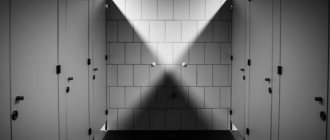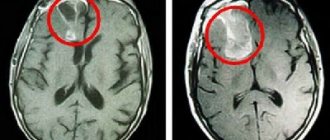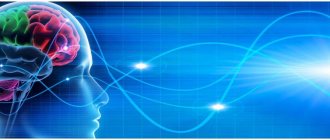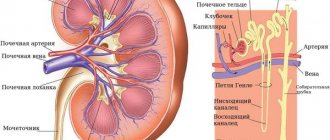NEUROGENIC BLADDER DYSFUNCTIONS IN CHILDREN
The basis for urinary dysfunction, one of the most common reasons for children's visits to nephrological practice, is, as a rule, functional disorders of the mechanisms of storage and emptying of the bladder without underlying neurological and traumatic damage. These conditions can cause damage to the upper parts of the urinary system, including the development of irreversible kidney disease, and therefore require an integrated approach both in terms of clinical and instrumental examination and treatment tactics.
Impaired mechanisms of accumulation and emptying of the bladder without predisposing neurological and traumatic injuries are generally responsible for dysuria, a most common cause of children's referral in nephrological care. These conditions may cause upper urinary diseases, even by causing irreversible renal changes since they require a comprehensive approach to be used both in clinical and instrumental studies and treatment.
IN AND. Kirillov, professor. Department of Childhood Diseases, Moscow Medical Dental Institute N.G. Kireeva, resident doctor. Moscow City Children's Hospital of St. Vladimir
Prof. VIKirilov, Department of Childhood Diseases, Moscow Medical Stomatological Institute NGKireyeva, Registrar, Saint Vladimir City Children's Hospital, Moscow
Due to the unclear etiology of functional bladder disorders and the frequent lack of instrumental confirmation, a wide variety of terms are used to designate them: dysfunctional urination syndromes, non-neurogenic neurogenic bladder, subclinical neurogenic bladder, occult neuropathic bladder, etc. Many urinary dysfunctions are based on at least Most of the factors that can lead to damage to the upper urinary tract are insufficient coordination of the activity of the detrusor, bladder neck or external sphincter. These disorders occur either alone or in combination and often lead to increased intravesical pressure without obvious neurological underlying pathological processes.
Pathogenesis
Urination is a complex act, and its mature mode includes the coordinated function of a number of muscle formations, when volitional contraction of the detrusor is accompanied by relaxation of the external sphincter with emptying of the bladder under relatively low pressure [1]. In newborns and children in the first months of life, urination is involuntary, with the closure of reflex arcs at the level of the spinal and midbrain. During this period, the functions of the detrusor and sphincter are usually well balanced. As the child grows during the formation of an adult urination pattern (by 2, 5 – 3 years) [1], 3 factors are important. The first is an increase in bladder capacity (6 times) with a decrease in the frequency of urination; the second is the acquisition of control over the sphincter and other urethral mechanisms responsible for the initiation and cessation of miction; the third is the appearance of inhibition of the urinary reflex, which is carried out by inhibitory cortical and subcortical centers. Before this milestone, a distinctive feature of the maturation of the act of urination is an increase in intravesical pressure during the accumulation phase compared to older children. From the age of 1.5 years, most children acquire the ability to feel the filling of the bladder [2]. Cortical control over subcortical centers is established in the age period between 3 and 5 years [3]. In this regard, most cases of urinary dysfunction occur between the ages of 3 and 7 years. Rice. 1. Clinical symptom complexes of neurogenic bladder dysfunctions
The most common type of bladder dysfunction, an unstable bladder, is caused by the persistence of uninhibited detrusor contractions due to delayed maturation of the voiding (inhibitory) center in the cerebral cortex or reticulospinal tracts. A possible cause of this pathological type of urination is perinatal encephalopathy, as well as one of its outcomes - cerebral palsy, in which detrusor hyperreflex may be the only manifestation. A certain adverse effect of estrogens on the urodynamics of the upper and lower urinary tracts is emphasized. In particular, hyperreflexia in girls with an unstable bladder is accompanied by an increase in estrogen saturation, which causes an increase in the sensitivity of M-cholinergic receptors to acetylcholine [4]. This explains the predominance of female children in the total group of patients with urinary disorders of a functional nature.
| Table 1. Classification of neurogenic bladder dysfunctions | |
| Dysfunctions | Manifestations |
| Lungs | daytime frequency syndrome stress incontinence urinary incontinence when laughing nocturnal enuresis |
| Medium-heavy | · lazy bladder syndrome (large hypotonic bladder, detrusor hyporeflexia, rare urination) · unstable (hyperreflexive) bladder (persistent infantile bladder, immature hypertension-detrusor hyperreflexia) |
| Heavy | · Hinman syndrome (non-neurogenic neurogenic bladder, detrusor-sphincter dyssynergia · Ochoa syndrome (urofacial syndrome) |
In conditions of insufficiently inhibited automaticity of the bladder in the absence of adequate relaxation of the external sphincter, an increase in intravesical pressure occurs. Such dyssynergia is also possible in cases where a child, against the background of hypertonicity of the bladder, tries to stay dry through volitional efforts. In this situation, there is a possibility of developing failure of the closure mechanism of the ureterovesical anastomosis, which under normal conditions provides anti-reflux protection [5]. The resulting vesicoureteral reflux (VUR) represents the main danger of neurogenic dysfunction in relation to damage to the upper urinary tract.
| Table 2. Diseases with which it is necessary to make a differential diagnosis of nocturnal enuresis as a monosymptomatic condition | |
| Enuresis is associated with polyuria | · diabetes mellitus · diabetes insipidus · renal tubular acidosis · chronic renal · failure · acute pyelonephritis |
| enuresis without polyuria | · posterior urethral valves · inflammatory processes in the external genitalia · acute and chronic cystitis · helminthic infestations |
Taking into account the high probability of VUR being caused by neurogenic bladder dysfunctions, they are increasingly coming to the conclusion of conservative management of patients with reflux using anticholinergics and measures that improve urodynamics. Such tactics significantly increase the rate of resolution of VUR in children of the first years of life and improve the outcomes of antireflux operations [5, 6]. S. Greenfield and J. Wan [7] suggest an average follow-up period for VUR of 4–5 years (the age at which the adult urination pattern develops), after which, if it persists, surgical intervention should be undertaken.
| Table 3. Clinical signs of Hinman syndrome |
| · urinary incontinence at night and during the day · chronic constipation and encoprosis · recurrent UTI · absence of anatomical anomalies of the upper and lower urinary tract, as well as neurological pathology · mental status features: lack of individuality. Unfavorable psychological environment · decreased nitrogen excretory function of the kidneys with the development of chronic renal failure. Arterial hypertension · radiographic changes: ureterovesical obstruction, VUR, dilatation of the upper urinary system, scars in the kidneys, secondary shrinkage of the kidney; positive influence of education, suggestive therapy and bladder training · failure of reconstructive surgery |
Another possible serious consequence in conditions of high pressure in the bladder is hydronephrosis, the development of which is explained by constriction of the vesicourethral segment against the background of detrusor hypertrophy [8]. The loss of the functional integrity of the detrusor, bladder neck and external sphincter is the cause of dysuric disorders (in particular, urinary incontinence), the type and nature of which is determined by the dominant activity of these muscle formations. Neurogenic dysfunctions of the bladder are aggravated by urinary tract infections (UTIs) of any location. At the same time, they can initiate some variants of urinary dysfunction [9]. Thus, this pathology can only be accompanied by urination disorders that do not cause serious deviations in the child’s health and only cause a feeling of discomfort. However, more severe consequences are potentially possible (Fig. 1).
Classification
Without in any way detracting from the merits of the classification of neurogenic bladder dysfunctions presented in the excellent monograph edited by M.D. Javad-Zadeh and V.M. Derzhavin [10], it should be noted that it is based on purely functional characteristics, the assessment of which is carried out using special methods (at least cystometry). There is no doubt about the need to use tests to study urodynamics in patients with urinary disorders in a number of cases. However, in general clinical practice, including nephrology and urology hospitals, technologies for detailing bladder functions are usually absent.
| Table 4. Diagnostic measures for urinary dysfunction |
| Required · Daily rhythm of spontaneous urination (“urination profile”, “urinary diary”) Ultrasound examination Urine examination, including bacteriological methods Assessment of urodynamics of the lower urinary tract using urofluometry, cystometry, urethral profilometry, electromyography* Electoral (according to indications) · Vaccination cystography · Cystoscopy · Urography · Blood pressure measurement · Study of concentration and nitrogen excretory function of the kidneys** Vaccination cystography Cystoscopy Urography Blood pressure measurement Study of the concentration and nitrogen excretory function of the kidneys** *If it is impossible to use all of these methods, preference should be given to retrograde cystometry. **Supplemented by assessment of urinary excretion of albumin and low molecular weight proteins if these methods are available. |
In addition, this classification does not imply the division of variants of urinary dysfunction into threatening (in relation to damage to the overlying parts of the urinary system) and significantly milder monosymptomatic conditions with only dysuric disorders. Identification of these options based on the clinical symptom complex allows us to determine the scope of diagnostic procedures. The attractiveness of Y. Homsy's classification [11] lies in the division of bladder dysfunctions by severity, based on the likelihood of involvement of the upper urinary system. In addition, the functional integrity of detrusor and external sphincter activity is taken into account. This approach, in our opinion, is closest to practicing pediatricians (Table 1).
Rice. 2. Cystometric indicators. The first + marks the first urge to urinate, the second + - imperative urge
| a – healthy child (11 years old). The volume of retrogradely administered fluid (V) and pressure in the bladder (P) are within age standards (V+ = 146 ml, V++ = 238 ml; P+ = 8.2 cmH2O, P++ = 12.7 cmH2O). There are no significant pressure drops in the bladder during its filling, which characterize the degree of adaptation processes (A+ = 88%, A++ = 79%); | |
| b – sick child (5 years old) with a hyperreflexive non-adapted bladder. Low filling volume at the first (V+ = 7 ml) and imperative (V++ = 65 ml) urge. Increased pressure in the bladder (P+ = 36.5 cmH2O, P++ = 29.1 cmH2O). Significant fluctuations in intravesical pressure in the accumulation phase (A+ = –17%, A++ = 23%). |
Clinic
Daytime Frequency Syndrome (DFMS).
It was first described by S. Koff and M. Byard in 1988 [12].
Clinical manifestations include the sudden appearance of a frequent urge to urinate (after 15–20 minutes). Mictation is painless, and urodynamic examination does not reveal significant abnormalities. This symptom complex can persist from 2 days to several months and usually disappears spontaneously, at the same time yielding to anticholinergics. Stress incontinence.
A rare variant of urinary dysfunction, which manifests itself in girls of puberty when they strain while performing gymnastic exercises.
Typically, the amounts of urine missed are very small. Prevention of this mild dysfunction comes down to emptying the bladder before physical activity. Urinary incontinence when laughing.
It is common among prepubertal and pubertal girls and is sometimes accompanied by complete emptying of the bladder.
Urodynamic studies rarely reveal uninhibited contractions of the bladder (hyperreflex bladder). This self-limiting condition may be responsive to anticholinergics or sympathomimetics. Nocturnal enuresis.
A monosymptomatic condition, 3 times more common in boys and apparently associated with a disruption in the maturation of cortical mechanisms that provide voluntary control of the urination reflex. Primary enuresis (in the absence of a period of urinary retention at night) is most often caused by perinatal encephalopathy. The pathology can be secondary in nature after emotional stress, against the background of pain, fatigue, intoxication in severe somatic and infectious diseases.
| Table 5. Functional characteristics of neurogenic bladder dysfunctions |
| · Hyper-reflex bladder - non-adapted* - adapted* · Normoreflex bladder - non-adapted* · Hypo-reflex bladder - non-adapted* - adapted *Including postural. |
Instrumental examination only in rare cases reveals hyperreflexia of the bladder, especially at night. However, episodes of enuresis do not coincide with cystometric indicators. Nocturnal enuresis is rarely accompanied by VUR, the frequency of which increases significantly in the case of a combination of night and daytime urinary incontinence. Before starting therapy, it is necessary to exclude a number of pathological conditions that can occur with enuresis (Table 2). Currently, desmopression (desamino-D-arginine vasopression - DDAVP) has been used to treat enuresis due to the established connection of this condition with a slowdown in the formation of normal circadian levels of antidiuretic hormone (ADH) secretion. Replacement therapy with this drug reduces the incidence of enuresis in children with ADH deficiency. However, it must be emphasized that DDAVP does not cure enuresis, and often its effect does not exceed the duration of therapy. In addition, the long-term results of such treatment have not yet been assessed. Complex therapy for nocturnal enuresis, presented later in the article, gives positive results in 60–80% of cases. Lazy bladder syndrome.
It is more common in girls and is characterized by rare urination every 8 to 12 hours, which may be interspersed with urinary incontinence.
In this case, constipation is often observed, and prolonged retention of urine in the bladder leads to the development of infection of the lower parts of the urinary system. Urination in this category of children requires additional effort from the muscles of the anterior abdominal wall, but even under these conditions it is often intermittent and is not accompanied by complete emptying of the bladder. Etiologically, infrequent urination may be behavioral in nature, or an underlying clear deficiency of detrusor activity (hyporeflexia). There are no signs of bladder outlet obstruction. A feature of the treatment is to ensure frequent urination (every 2 hours), and for complete evacuation of urine - double urination. In case of large amounts of residual urine, periodic catheterizations are recommended. In rare cases, this dysfunction is combined with ectasia of the upper urinary system. Unstable (hyper-reflex) bladder.
The most common urinary dysfunction is a pathology that is caused by urodynamic disorders.
It is associated with a slowdown in the disappearance of uninhibited contractions of the bladder. The automatic mode of operation that expels urine from the bladder can be hampered by contractions of the external sphincter, voluntary control of which is established in early childhood. In particular, a similar situation arises when a child wants to stay dry and refrain from urinating. This vaguely resembles urodynamic disorders with posterior urethral valves. Table 6. Therapeutic measures for neurogenic bladder dysfunctions
| Type of neurogenic dysfunction | Urination according to schedule | Periodic catheterizations* | Vitamin therapy | Anticholinergics | Psychotropic and sedatives | Antibacterial prophylaxis*** | Physiotherapy*** | Other methods |
| SDChM | – | – | – | +** | – | – | – | – |
| Urinary incontinence when laughing | – | – | – | +** | – | – | – | – |
| Nocturnal enuresis | – | – | + | + | + | – | + | Desmopressin** |
| Lazy Bladder Syndrome | + | + | + | – | – | – | + | M-cholinomimetics (aceclidine) Laxatives |
| Unstable (hyper-reflexive) bladder | + | + | + | + | + | + | + | Biofeedback |
| Hinman syndrome | + | + | – | + | + | + | + | Biofeedback Laxatives Psychotherapy |
| Ochoa syndrome | + | + | ? | + | ? | + | ? | ? |
| *With a large amount of residual urine and/or exacerbation of UTI due to VUR. **Alternative indications. ***For UTIs to prevent relapses. ****Decoding in the text. ? no data on effectiveness. | ||||||||
Thus, an unstable bladder creates conditions for increased intravesical pressure, which, in turn, can cause the occurrence of unilateral or bilateral VUR (in 30–50% of patients), often with the development of reflux nephropathy. This category of children usually does not have urinary incontinence; there is often obstruction of the ureterovesical segment, leading to dilation of the ureter and pelvis [8]. These variants of unstable bladder, occurring with severe detrusor hypercontractility, are observed in children of various age groups, including the first months of life. This group of patients is often not inferior to treatment with anticholinergics. In 60–70% of children, the activity of the detrusor prevails over the resistance of the external sphincter, and this dysfunction is manifested by frequent imperative and/or painful urges, involuntary urination, and nocturnal enuresis. Regardless of the variants of hyperreflexia, recurrent UTI is common. In most cases, anticholinergics, forced urination, and periodic catheterizations cause resolution of VUR or help reduce its severity [5, 6, 13]. Hinman syndrome.
This symptom complex was first described by F. Hinman and F. Bauman in 1973 [14] and is the most severe variant of detrusor-sphincter dyssynergia.
The clinical picture is presented in table. 3. This rather rare pathology is unique in relation to the development of irreversible changes in the kidneys against the background of functional disorders of the act of urination, when there are no mechanical signs of obstruction, which are the main causes of nephrosclerosis in pediatric practice. In this case, the resulting obstruction is caused by insufficient relaxation of the external sphincter when attempting to urinate, which is confirmed by a decrease in urine flow rate, an increase in emptying time, increased or decreased intravesical pressure, the presence of residual urine, and a large bladder with thickened walls during urodynamic studies [15]. The participation of a psychological component in the development of this dysfunction is assumed, taking into account the characteristics of the mental status and unfavorable family history (alcoholism, mental trauma, lack of education, etc.) in this category of patients. Psychotherapy in children and families can often improve urodynamics [15]. D. Varlam and J. Dippell [15], observing 9 girls with Hinman syndrome for 5 years, found high creatinine levels in 8 of them with the development of end-stage renal failure in 1 case. 5 children had arterial hypertension (including hypertensive crisis). A 2-stage management of this category of patients is indicated. The first (symptomatic) is aimed mainly at normalizing urodynamics and includes periodic catheterization of the bladder, frequent urination using the biofeedback method, anticholinergics, laxatives, antimicrobial prevention of UTIs, as well as diversion of urine from the pelvis with hydronephrosis. R. Gonzalez and A. Mikael [9] recommend the use of diazepam (seduxen) to relax the sphincter. The second stage (etiological) consists of carrying out suggestive therapy and educational measures (hygienic skills). Ochoa syndrome (urofacial syndrome).
Described in Colombia, and its frequency in other countries is not yet known. A synonym for this pathology is urofacial syndrome, caused by an inversion of facial expression when laughing, creating the impression of screaming or crying. There is a hypothesis that explains the relationship between facial expression and bladder dysfunction. It lies in the assumption that the urinary centers and the facial nerve are close to the brain stem, and disturbances in this area may affect some organ functions. This symptom complex has many common features with Hinman syndrome. The age of patients ranged from 3 months to 16 years. An autosomal recessive type of transmission is assumed [16]. The clinical picture is characterized by daytime and/or nocturnal enuresis, chronic constipation, recurrent UTI, high incidence of VUR and ureterohydronephrosis (due to functional ureterovesical obstruction) [17]. Ochoa syndrome poses a risk of developing hypertension and chronic renal failure. Cystometric studies reveal uninhibited contractions of the bladder and a large amount of residual urine. The treatment strategy for urofacial syndrome is similar to Hinman syndrome.
Diagnostics
The scope of diagnostic procedures includes mandatory measures, which can be limited to in the presence of mild urination disorders, as well as special methods according to indications (Table 4). The complex of the latter makes it possible to exclude the prognostically unfavorable consequences of a neurogenic bladder (VUR, ectasia of the upper urinary system, arterial hypertension, decreased partial renal function), as well as primary diseases that may be accompanied by urination disorders (ectopic ureteral orifice, bladder outlet obstruction). Thus, a situation often arises that requires a comprehensive examination of the child including instrumental methods (including those usually used in urological practice). This refers primarily to the assessment of the urodynamic function of the lower urinary tract based on urofluometry, cystometry, profilometry and electromyography. This can be done using the “Relief” device (Russia), whose own experience in using it at the St. Vladimir Children’s City Hospital began in 1994. This device allows you to evaluate not only the functional variants of dysfunctions [10], but also to eliminate mechanical obstacles in the urethra. Based on a study of urodynamics, a classification of neurogenic bladder dysfunctions was proposed (Table 5) [10], the variants of which are presented in decreasing order of frequency. The concept of hyperreflexia refers to increased excitability of the spinal micturition arch. The adaptability of the bladder is its ability to maintain the pressure level at the minimum possible when a unit volume of fluid is received. On the contrary, an unadapted (uninhibited) bladder is characterized by an inadequate increase in pressure, disrupting the relationship between it and volume. Urodynamic disturbances that manifest themselves in a sitting or standing position are classified as postural. In Fig. Figure 2 shows the results of assessing urodynamics in cystometry mode in a healthy child (a) and with the most common dysfunction - a hyperreflexive non-adapted bladder (b).
Treatment
Treatment of neurogenic bladder dysfunction is often a complex task, requires complex therapy and requires differentiated tactics (Table 6). General events.
A protective regime is recommended with the elimination of traumatic situations, additional sleep (1–2 hours), avoidance of vigorous games before bedtime that cause nocturnal enuresis, and walks in the fresh air.
If there is a residual background, clinical observation is carried out jointly with a neurologist. Urostasis in the bladder requires periodic catheterizations, as well as urination according to a scheduled schedule (in the case of a hyporeflex bladder with double or triple emptying). Vitamin therapy.
Vitamins of group B (B1, B2, B6), PP, A and E in age-specific dosages in combination with possible parenteral administration.
Anticholinergics.
Selectively for hyperreflexia (one of the drugs): bellataminal - 1/2 - 1 tablet 2 times a day;
oxybutynin - in children over 5 years old, 1 tablet (5 mg) 2 times a day (3 times with the last dose at night for nocturnal enuresis); melipramine - 0.02 - 0.05 g 1 time at night or 0.01 - 0.025 g at 4 pm and 8 pm. The therapeutic dose is reached gradually, starting from 0.01 g. In addition to the anticholinergic effect, it has myotropic antispasmodic and antidepressant activity ; atropine - 0.05 - 0.5 mg 1 or 2 times a day. To predict the effectiveness of these drugs, an atropine test is used, the positive results of which (improved urodynamic parameters 30–40 minutes after subcutaneous administration of atropine) are an indication for the prescription of anticholinergics. Agents that normalize metabolic processes in the central nervous system Amino acids:
glutamic acid - 0.25 - 1 g 2 times a day;
glycine – 0.05 – 0.1 g 3 times a day; Nootropics:
piracetam - up to 5 years - 0.2 g 3 times a day, over 5 years - 0.4 g 3 times a day or 20% solution, 8 ml 2 times a day;
picamilon – 0.01 – 0.025 g 2 times a day; pantogam - 0.25 - 0.5 g 3 times a day. The duration of courses of vitamin therapy, anticholinergics, amino acids, nootropics is 1–1.5 months, followed by 1–2 repetitions with an interval of 4–6 weeks. To eliminate a large volume of drugs taken orally at the same time, their sequential administration is indicated. Sedatives
Preference is given to drugs of plant origin (valerian, motherwort), which are given in alternating courses of 2 weeks for 2 months. diazepam - 0.0025 - 0.005 g 2 times a day is recommended for Hinman syndrome, taking into account the muscle relaxant effect; librax – 1/2 – 1 tablet 2 times a day (including for nocturnal enuresis, when the 2nd dose is given before bedtime). The spectrum of action of the drug also includes an anticholinergic effect.
Antibacterial prevention of UTIs
In case of exacerbation of UTI of any localization, etiotropic therapy is prescribed, the effectiveness of which increases as urodynamics normalize. The method of antibacterial prophylaxis of UTIs during the period of remission is justified by the clear dependence of nephrosclerotic processes on the frequency of exacerbations, especially in the presence of PMR [18]. In addition, persistent infection in the lower urinary system can maintain bladder dysfunction. The range of preventive agents includes uroseptics in small doses: furagin (or other nitrofurans) - 1 mg/kg, co-trimoxazole - 12 mg/kg, nevigramon - 15 mg/kg. They are given once at night in long courses of many months. We have shown the effectiveness of anti-relapse prescription of immunocorrective drugs: levamisole (1 mg/kg) once a week, and for intercurrent diseases in a 3-day cycle, followed by once a week for 1 - 2 months; tactivin (2 mcg/kg) in a 3-day cycle followed by 3 injections with an interval of 1–2 days for concomitant diseases; sodium nucleinate (0.05 - 0.1 g 3 times a day) in courses of 1 - 2 months [19]. Other events.
Some features of the management of children depending on the type of urinary dysfunction
Treatment: modern techniques
Several treatment approaches have been developed. The chosen technique depends on how severe the symptoms are and the stage of the disease.
For mild symptoms, exercises can be used as prevention and treatment to train the bladder muscles so that the patient can control urge and urination. The main goal of such exercises is to go to the toilet less often due to the fact that the muscles will be able to hold an increased amount of urine. The training includes two stages: going to the toilet if necessary in the morning and practicing urinary control throughout the day.
At the first stage of treatment, the patient learns to control urges and tries to visit the toilet at increased intervals. So, if previously the patient went to the toilet every half hour, the time gradually increases to 45 minutes or an hour. If you have a strong and uncontrollable urge to urinate when your bladder is empty, you can perform Kegel exercises by contracting your muscles. It is necessary to gradually increase the intervals between urinations. The norm is to visit the toilet 4-5 times during the day and once at night.
Conservative treatment
Treatment of an overactive bladder is carried out by prescribing medications that help relax the muscles in the bladder. These medications are prescribed by the doctor after diagnosis on an individual basis, depending on the reasons that caused the unhealthy condition and the symptoms that the patient complains about. The following techniques are used:
- For women during menopause, when observing atrophy of the vaginal mucosa and incontinence, the most effective treatment method is considered to be local use of vaginal estrogens in the form of cream or vaginal suppositories. If the technique is ineffective, it can be treated with injections of botulinum toxin type A directly into the overactive bladder;
- stimulation with electrodes of nerve endings that are responsible for relaxation of the organ. Electrical stimulation is performed through skin electrodes or by inserting a needle into a nerve in the ankle. This procedure does not cause discomfort, but makes it possible to significantly reduce the symptoms of an overactive bladder;
- surgical intervention - augmentation cystoplasty is used only in extreme cases, when an overactive bladder bothers the patient excessively, urinary incontinence is constantly observed, which interferes with the patient’s normal life.
Advantages of treatment at the clinic of JSC "Medicine"
Treatment in the hospital of the clinic of JSC "Medicine" takes place in comfortable conditions - patients are provided with rooms with all amenities.
The competitive advantage that the clinic has is cooperation with insurance companies. The modern clinic provides medical services at the highest professional level, providing effective treatment for patients even with complex forms of the disease.
Treatment and diagnostics are carried out by qualified specialists of our clinic using modern equipment, using effective medications, in order to completely relieve patients from pain and discomfort.









